How Trail Running Can Benefit OCR Training and Performance
Let’s face it, the basis of most traditional Obstacle Races is a fast trail run. Sure, your scenic escape into nature is going to be interrupted by obstacles, mud, cold water, and barbed wire, but at the heart of it is a trail run. So your training better include trail running.
Even if you’ve signed up for one of the newer indoor hybrid events like Spartan DEKA or HYROX, and most of your miles are logged on a track or treadmill, integrating at least some trail running into your training regimen will enhance your performance, build resilience, and give you the mental edge needed to for your race. Here’s how trail running can advance your game for OCR or Hybrid Fitness Races, along with a workout routine to get you started.
THE BENEFITS OF TRAIL RUNNING for OCR ATHLETES
Enhanced Agility and Balance Trail running demands constant adjustments to navigate roots, rocks, and uneven terrain. This builds superior agility and balance, which are crucial for maneuvering through obstacles efficiently.
Increased Leg Strength The varied terrain of trails works your muscles differently than flat surfaces, engaging your quads, glutes, and calves more intensely. This strengthens your legs, giving you the power to conquer steep inclines and obstacles.
Improved Cardiovascular Endurance Running on trails, especially with elevation changes, is a great way to boost your cardiovascular endurance. This helps you sustain energy levels throughout an OCR race, from the starting line to the final obstacle.
Mental Toughness Trail running often involves unpredictable elements, requiring quick thinking and adaptation. This builds mental resilience, helping you stay focused and calm during the chaotic environment of an OCR event.
Reduced Injury Risk The softer surfaces of trails reduce the impact on your joints compared to asphalt or concrete, decreasing the likelihood of overuse injuries. The varied terrain also strengthens stabilizer muscles, further protecting against injury.

TRAIL RUNNING WORKOUT ROUTINE FOR OCR ATHLETES
Weekly Schedule:
-
Monday: Strength Training Focus on compound movements like weighted sandbag squats, deadlifts, and lunges to build overall strength.
-
Tuesday: Speed Work on Trails Find a hilly trail and do intervals—sprint uphill for 30 seconds, then walk or jog back down. Repeat for 20 minutes.
-
Wednesday: Recovery Run A light, steady run on flat trails or soft terrain for 30-45 minutes. Keep the pace easy to promote recovery.
-
Thursday: Strength Training Include exercises that target core stability and upper body strength, such as planks, hollow holds, hanging knee raises, dead-bugs, push-ups and pull-ups.
-
Friday: Long Trail Run Run a longer trail route, focusing on maintaining a steady pace. Aim for 60-90 minutes, depending on your fitness level.
-
Saturday: OCR-Specific Training Combine running with obstacle practice. Set up a course with obstacles like monkey bars, walls, and carries, interspersed with short trail runs.
-
Sunday: Rest or Active Recovery Take a rest day or engage in light activities like yoga or stretching to promote recovery.
TIPS FOR GETTING THE MOST OUT OF YOUR TRAIL RUNS
Stay Present Pay attention to your surroundings and foot placement to avoid tripping or slipping. This mindfulness not only prevents injuries but also enhances the mental focus needed during OCR races.
Use Proper Gear Invest in a good pair of trail running shoes that offer traction and support. Wear moisture-wicking trail socks and clothes and carry essentials like water and snacks.
Hydrate and Fuel Keep hydrated and consume energy-boosting snacks like nuts, dried fruits, or energy gels, especially on longer runs.
Embrace the Challenge Trail running can be tough, but that's what makes it so beneficial. Embrace the hills, the mud, and the unpredictable elements —they're all part of making you a stronger OCR athlete.
GEAR ALERT
MudGear Performance Hiking/Trekking Socks
MudGear's Performance Hiking/Trekking Socks rise to the challenge. Designed for outdoor adventure, these socks offer premium arch and ankle support, ensuring you stay steady on your feet through challenging terrains. The moisture-wicking poly-spandex blend keeps your feet dry and blister-free, even after trudging through puddles and creek beds. Whether you're navigating rocky paths or ascending steep inclines, these socks provide the durability and comfort needed for your most rugged adventures.
MudGear Quarter (¼) Crew Socks
MudGear Quarter Crew Socks are crafted to withstand the toughest conditions. These trail-running socks feature a resilient American-made yarn blend for superior durability and comfort. Engineered for optimal performance, they offer medium ankle compression to keep dirt out and provide excellent moisture management. These socks ensure your feet remain protected and comfortable.
CONCLUSION
Trail running is not just a training tool; it’s a way to connect with nature, push your limits, and build the toughness required for OCR success. Incorporate these trail running tips and routines into your regimen, and watch your performance soar on race day.




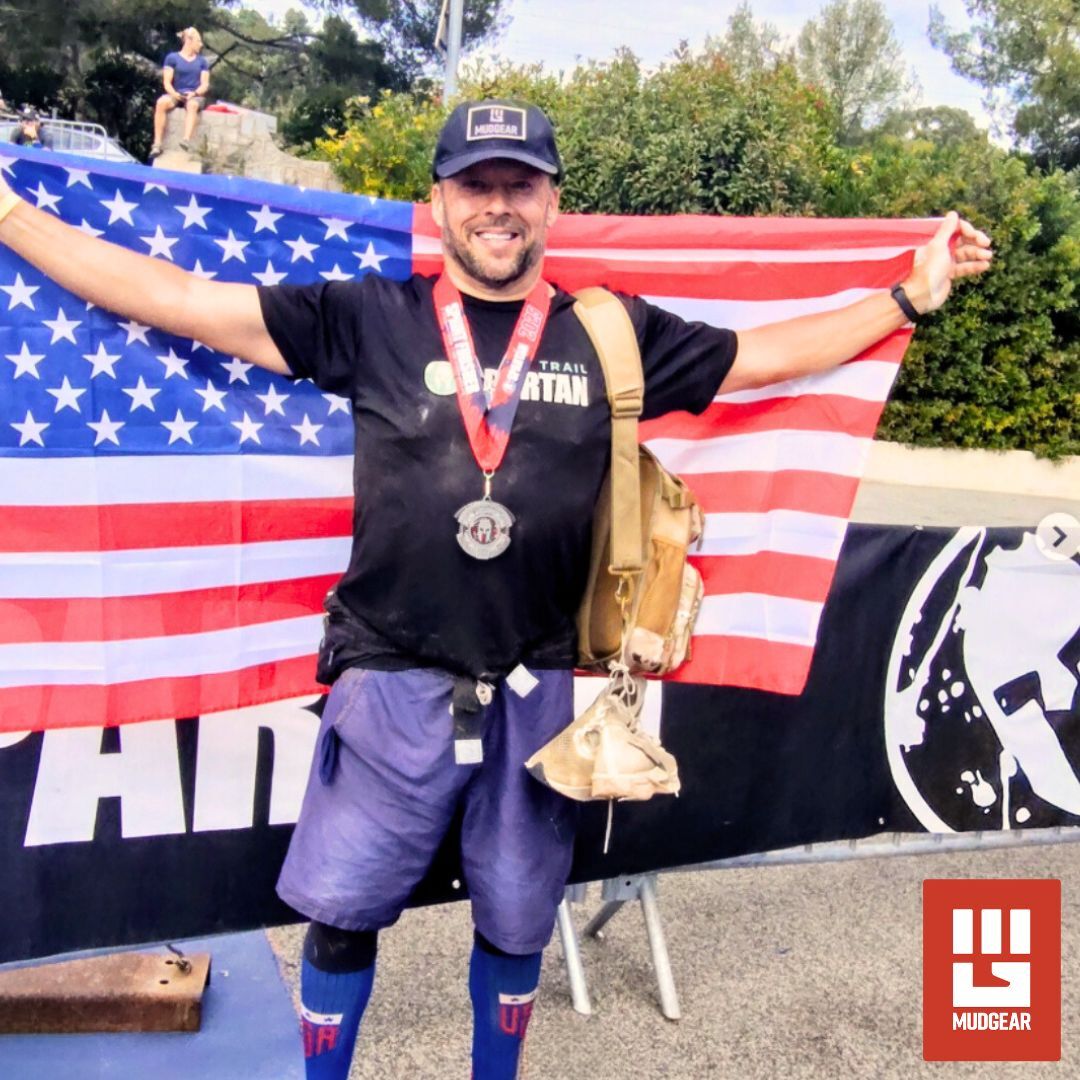
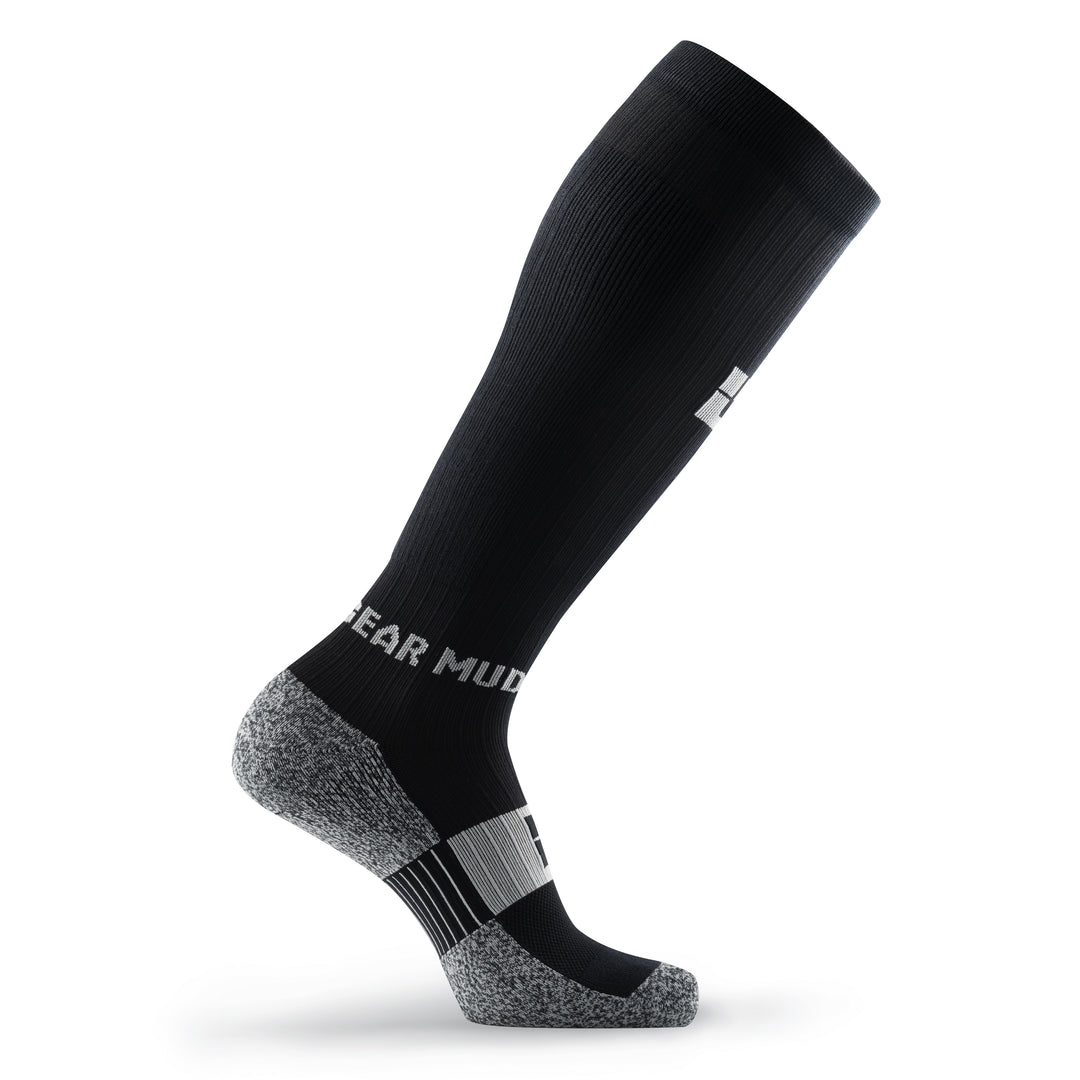
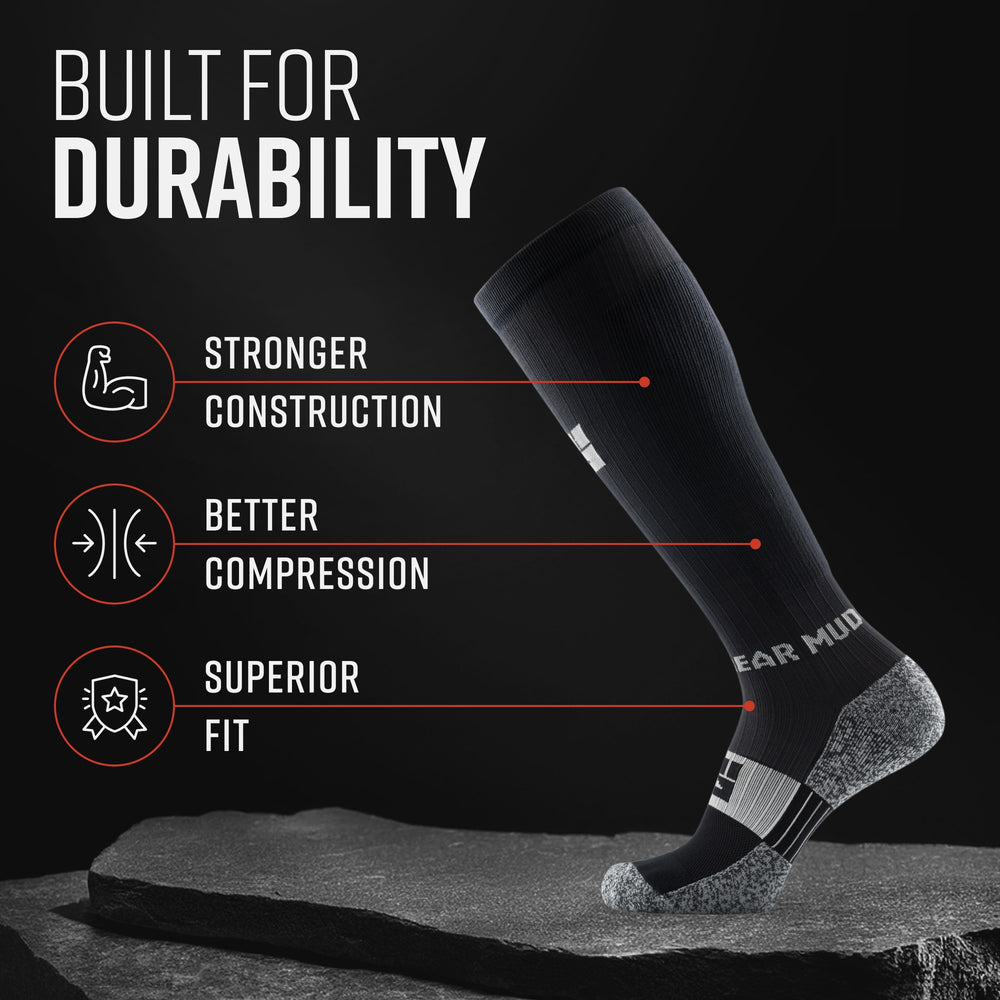
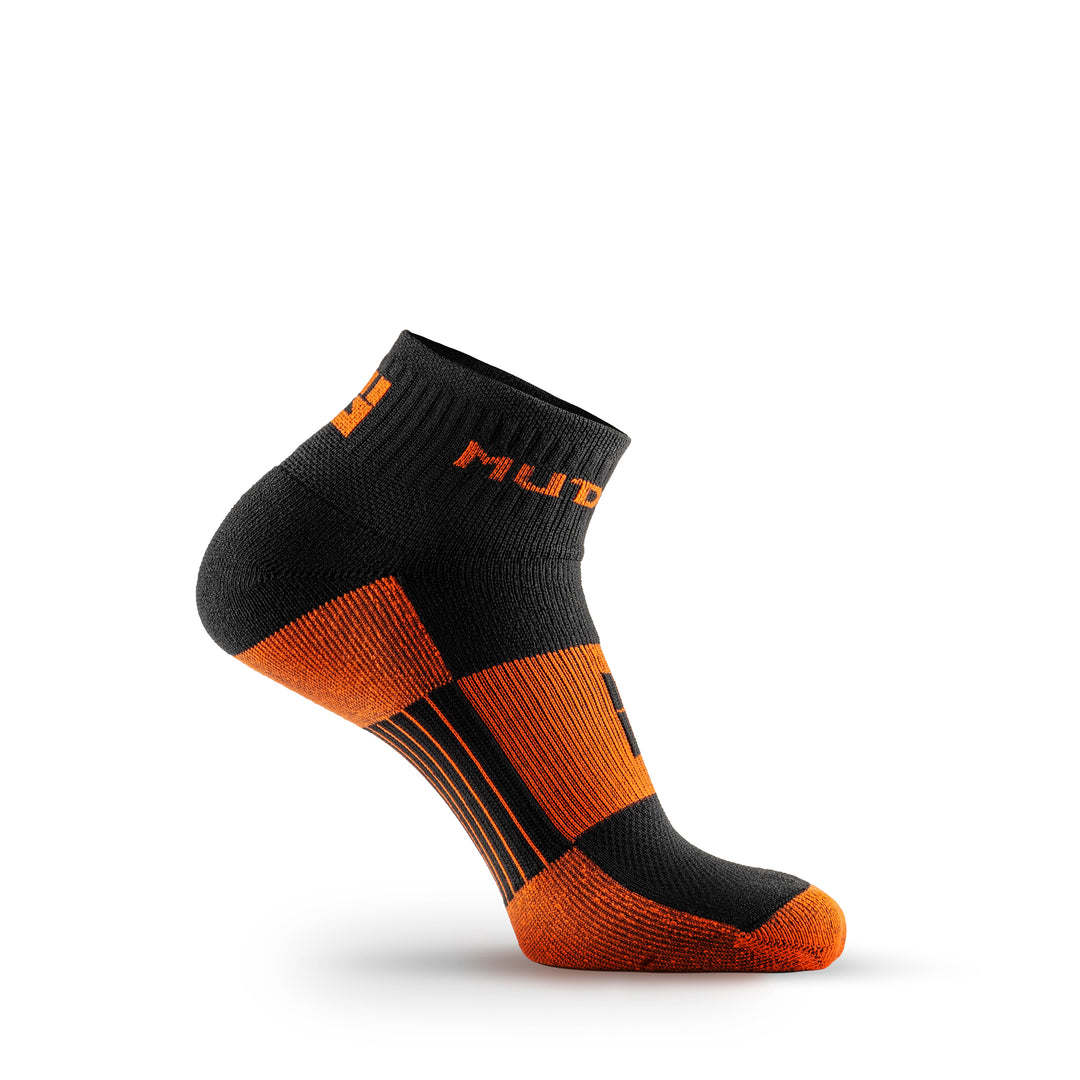
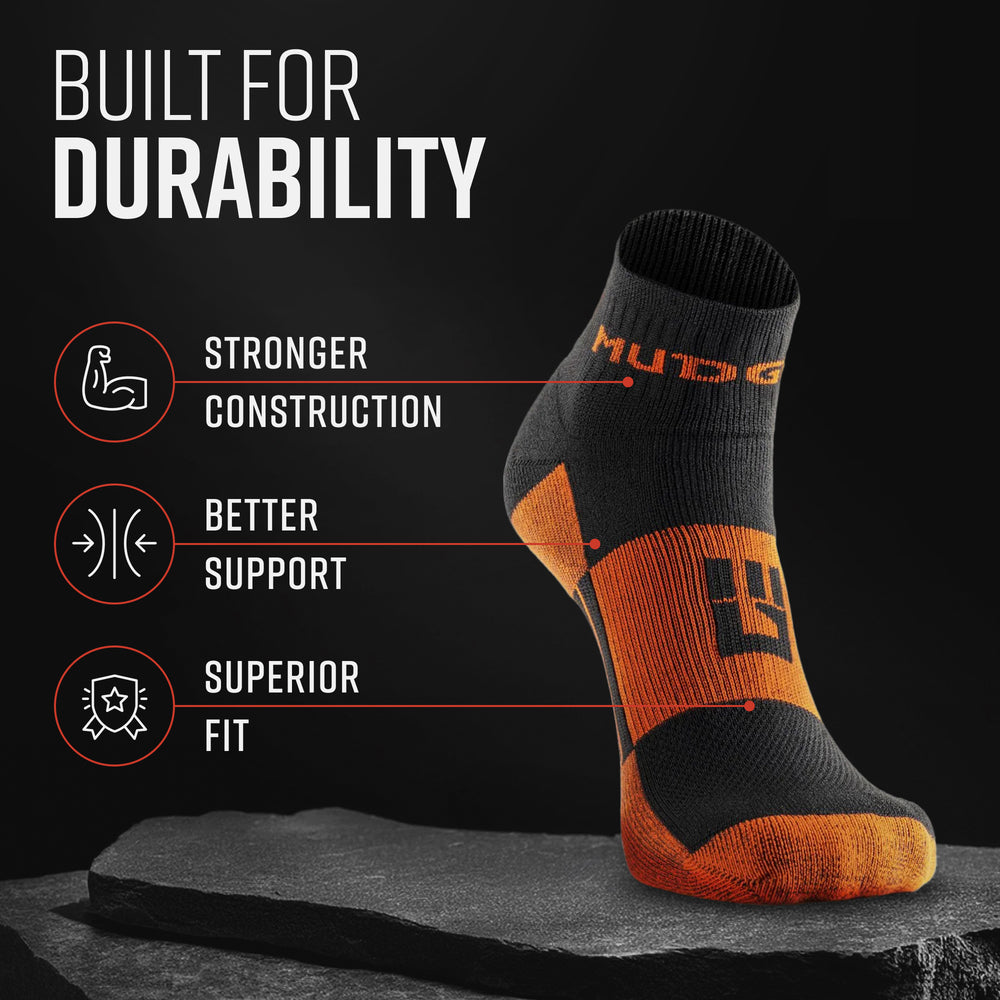


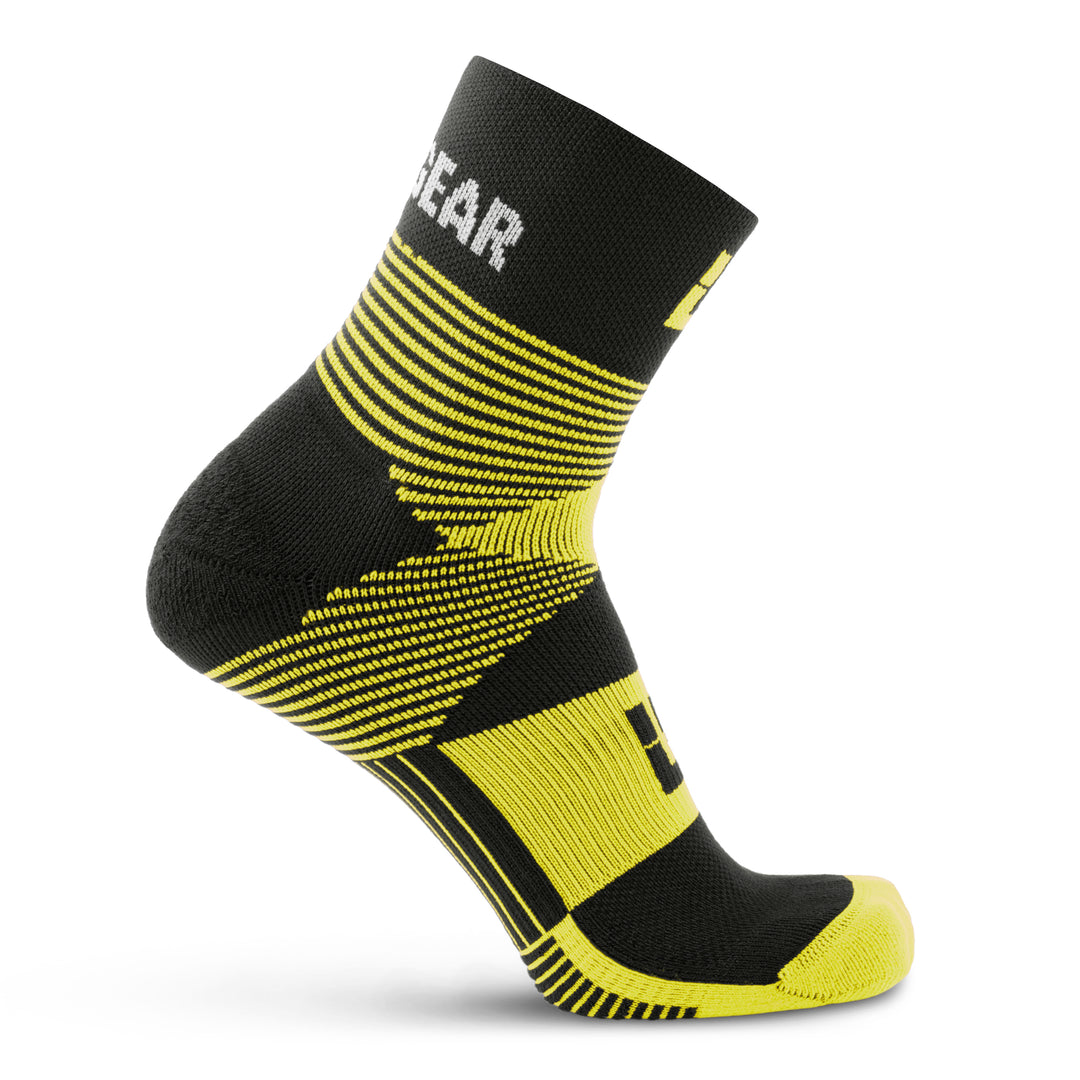


Leave a comment